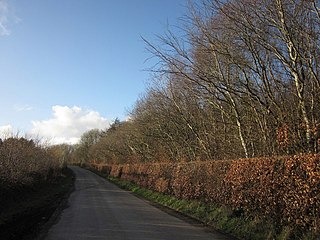| Site of Special Scientific Interest | |
 | |
| Area of Search | Somerset |
|---|---|
| Grid reference | ST132354 |
| Coordinates | 51°06′41″N3°14′29″W / 51.11130°N 3.24133°W Coordinates: 51°06′41″N3°14′29″W / 51.11130°N 3.24133°W |
| Interest | Biological |
| Area | 3.6 hectares (0.036 km2; 0.014 sq mi) |
| Notification | 1988 |
| Natural England website | |
Roebuck Meadows (grid reference ST132354 ) is a 3.6 hectare (8.9 acre) biological Site of Special Scientific Interest south of Crowcombe in Somerset, notified in 1988.

The Ordnance Survey National Grid reference system is a system of geographic grid references used in Great Britain, distinct from latitude and longitude. It is often called British National Grid (BNG).

The hectare is an SI accepted metric system unit of area equal to a square with 100-metre sides, or 10,000 m2, and is primarily used in the measurement of land. There are 100 hectares in one square kilometre. An acre is about 0.405 hectare and one hectare contains about 2.47 acres.

Crowcombe is a village and civil parish under the Quantock Hills in Somerset, England, 5.5 miles (9 km) south east of Watchet, and 8 miles (13 km) from Taunton. The village has a population of 489.
Roebuck Meadows have a very varied and herb-rich vegetation composed of mire and grassland communities together comprising an important example of lowland mire, which is a nationally scarce habitat. The meadows contain Cornish moneywort ( Sibthorpia europaea ), a nationally scarce plant restricted to south-west Britain. [1]

Sibthorpia europaea is a species of flowering plant known by the common name Cornish moneywort. It can be found as a disjunct distribution in western Europe from the Azores, Portugal and Spain to south-western Ireland and south-western United Kingdom. It also occurs in Crete, Pelion, Greece and tropical Africa. One possible explanation could be that the species had a more widespread distribution, possibly during the Tertiary.












